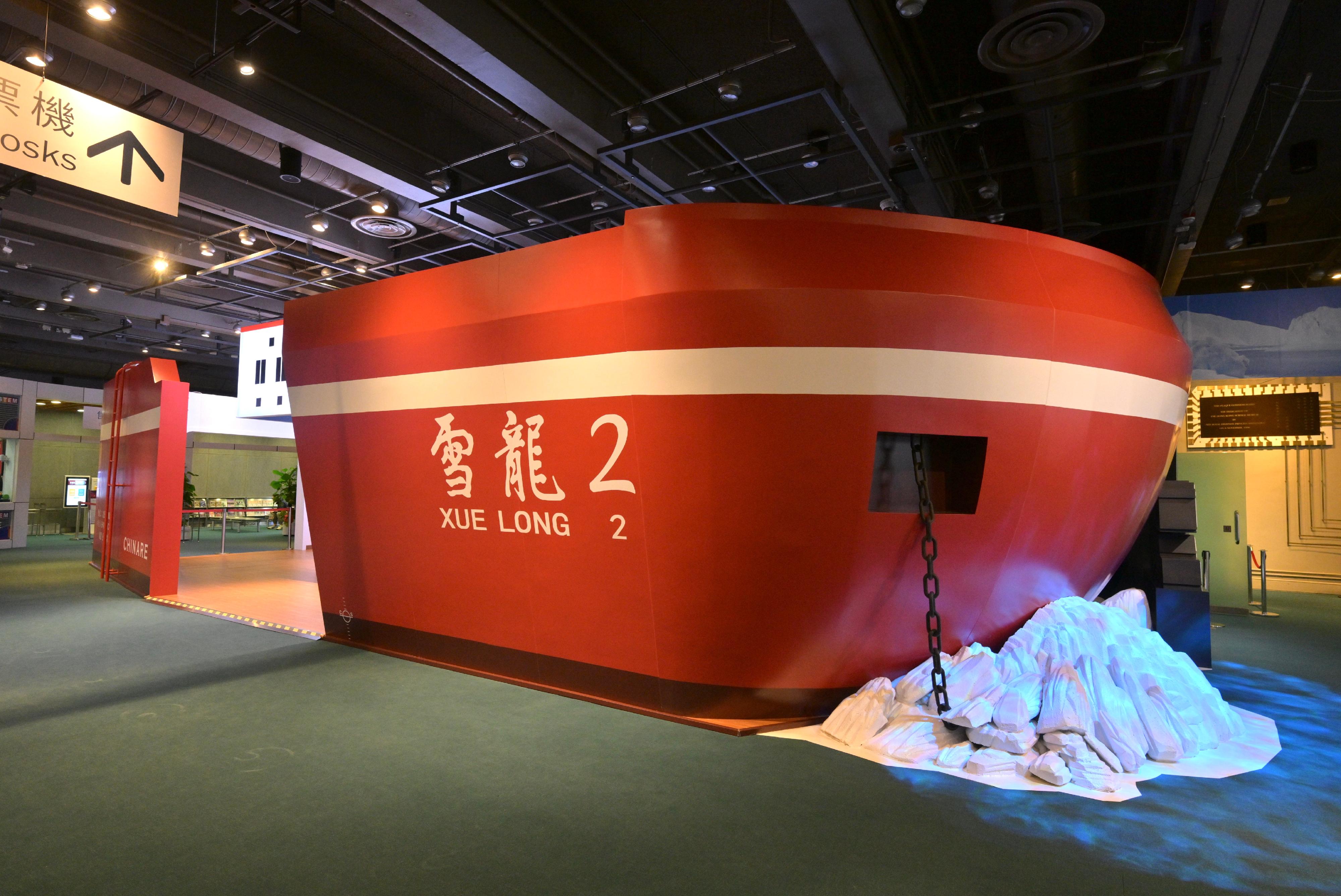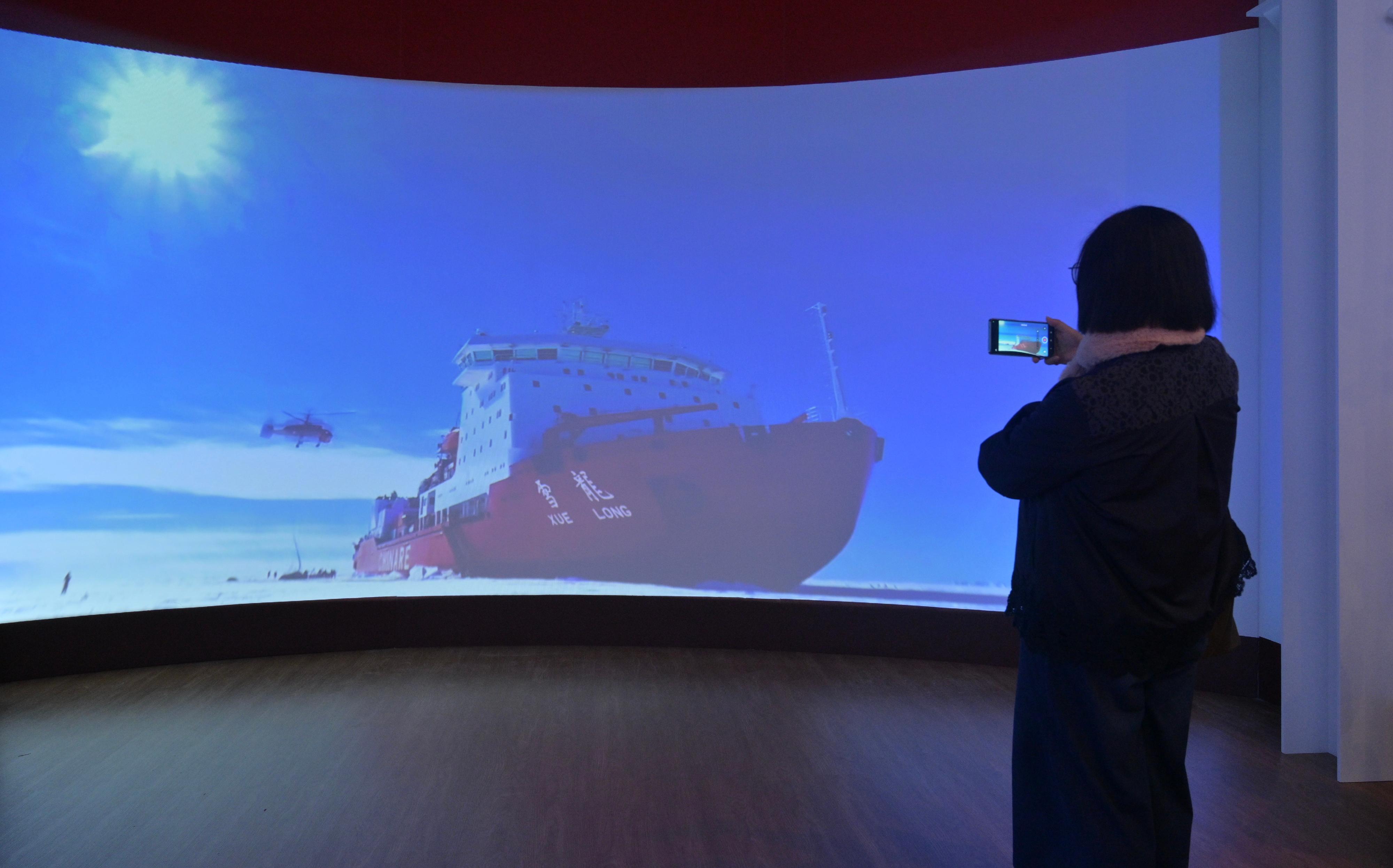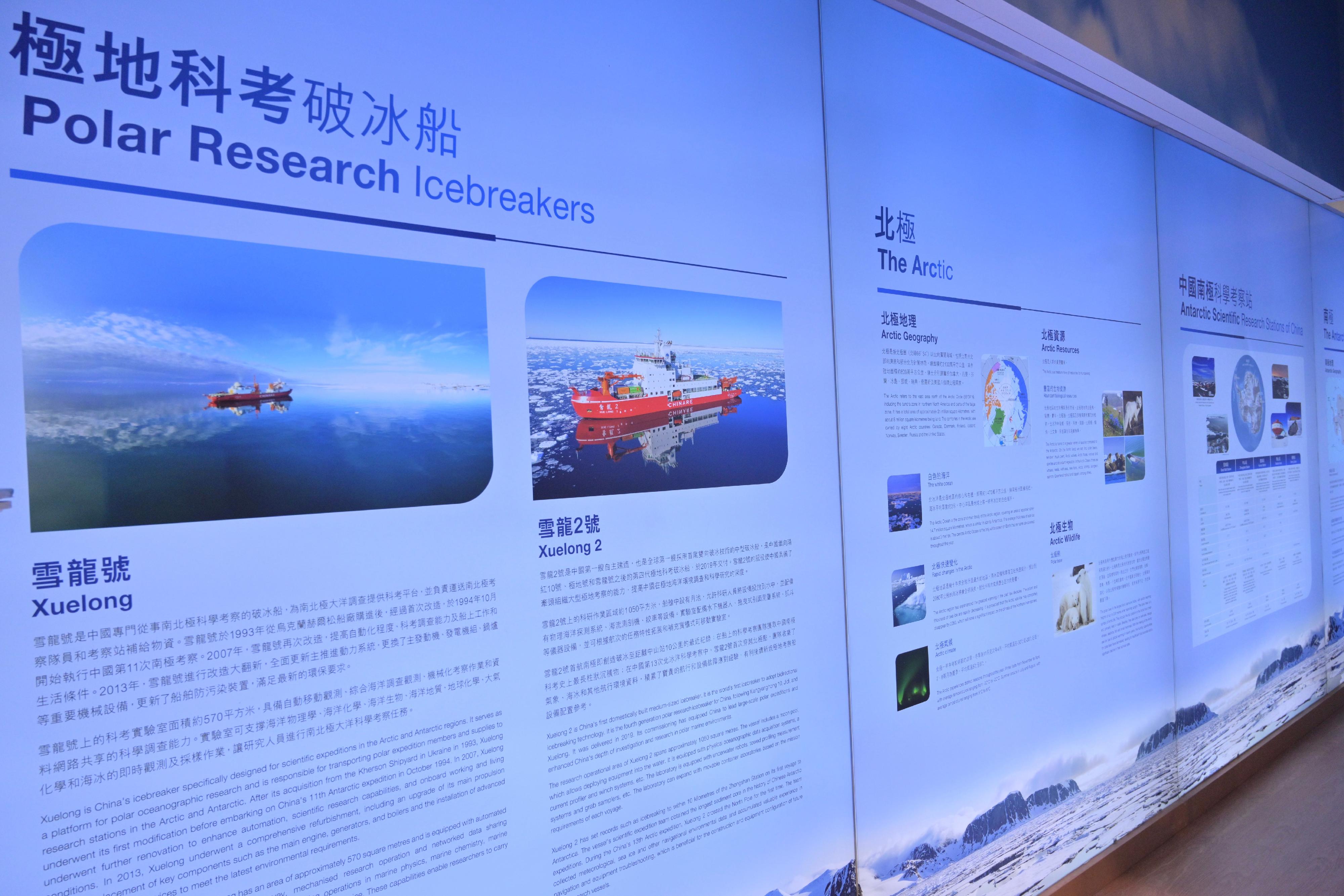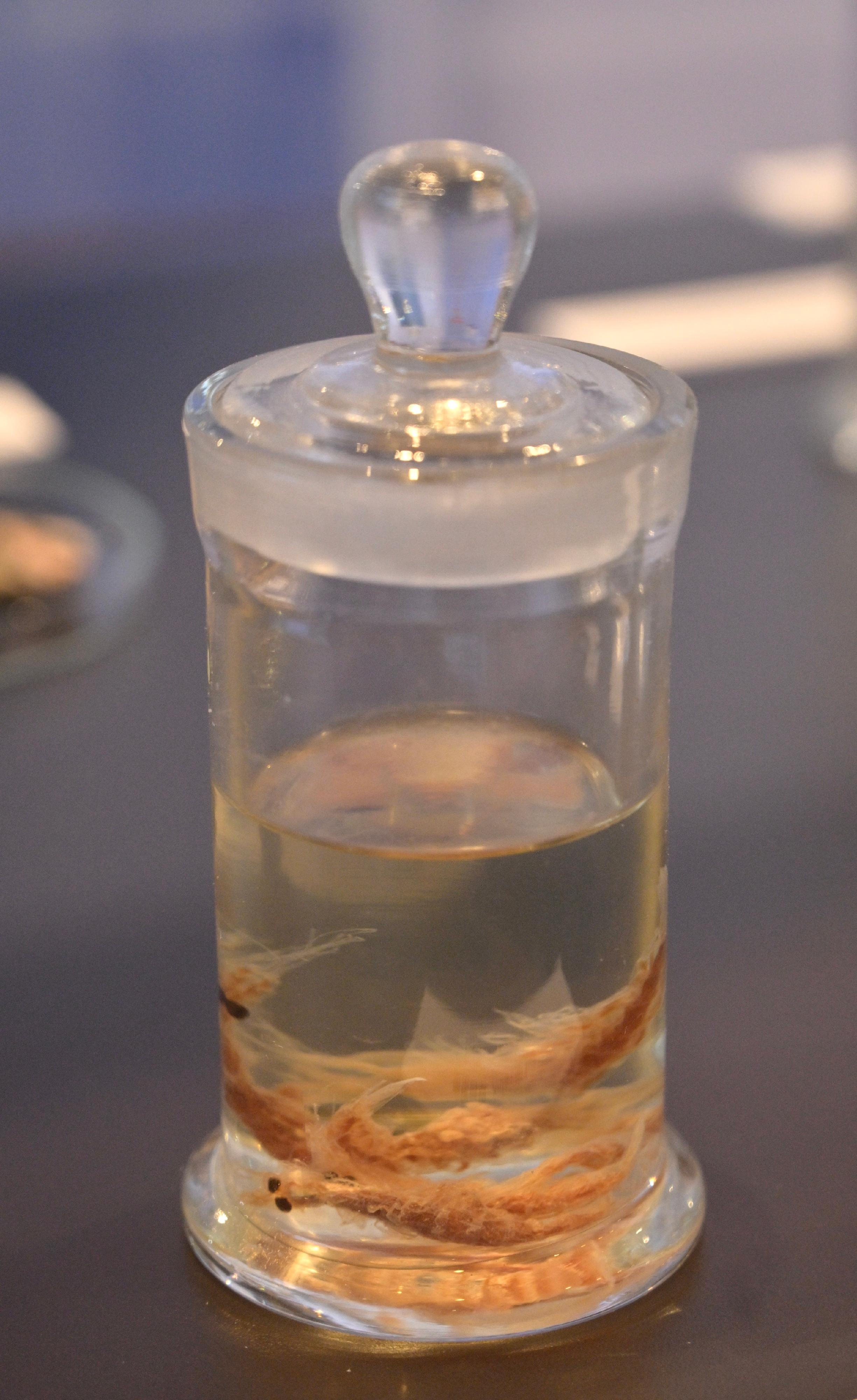Hong Kong Science Museum new exhibition showcases China's polar research achievements (with photos)
******************************************************************************************
Delivered in 2019, Xuelong 2 is China's first domestically built medium-sized icebreaker, and is also the world's first icebreaker to adopt bidirectional icebreaking technology. The icebreaker's commissioning has equipped China to lead large-scale polar expeditions and enhanced China's capabilities of investigation and research in polar marine environments.
Replicating the design of Xuelong 2, this exhibition allows visitors to feel as if they have boarded the vessel and learn about China's development of polar research. A large screen is set up inside the vessel to play videos of ice breaking in the polar regions, offering visitors an immersive experience. Highlight exhibits include a 1:100 scale model of Xuelong 2 and specimens collected directly from polar regions.
In addition to the features and research topics of the scientific observation and research stations in China, the exhibition also provides information on the geography and wildlife of the North and South Poles, as well as the situation of climate change. Members of the public can gain a deeper understanding of polar research through the exhibition, and reflect on how to reduce carbon footprints in daily life, combating the challenge of climate change.
Crew members and scientists of Xuelong 2 will visit Hong Kong next month, and join a sharing session with Hong Kong students to be held at the HKScM on April 10 to share their insights and experiences on polar expeditions. The HKScM will live-stream the programme via its YouTube channel (www.youtube.com/hksciencemuseum).
The exhibition is presented by the Environmental Campaign Committee and the Green Future Foundation Association, funded by the Environment and Conservation Fund, in association with the Environment and Ecology Bureau, the Leisure and Cultural Services Department and the Polar Research Institute of Hong Kong, and is organised by the HKScM.
The exhibition will run from March 18 to June 26 at the main lobby of the HKScM (2 Science Museum Road, Tsim Sha Tsui East). For more information of the exhibition and sharing session, please visit hk.science.museum/en/web/scm/exhibition/pracc.html, or call 2732 3232 for enquiries.
Ends/Monday, March 18, 2024
Issued at HKT 15:50
Issued at HKT 15:50
NNNN









